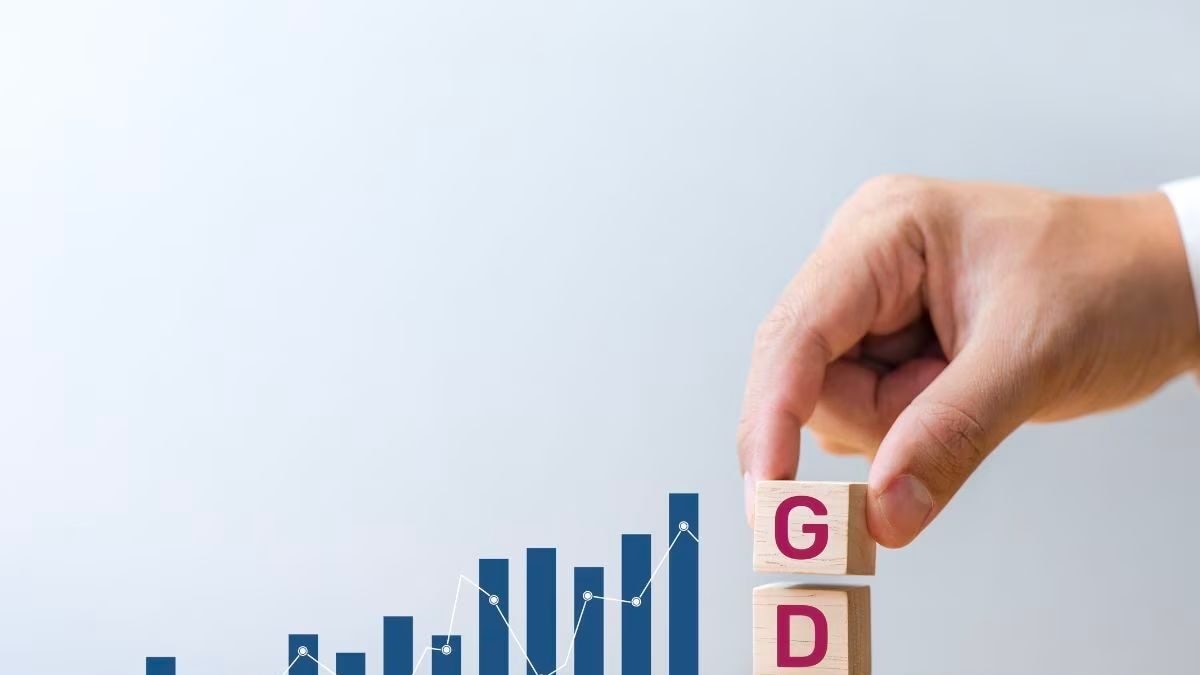My Ghibli childhood, according to my mother, began when I was three. One day, seeing me and my sister bored and listless, she put aside some sheet music that she had been practicing—she had quit her career as a pianist to raise us—and began to play the score to “My Neighbor Totoro.” There it was, the wind that blew across Hayao Miyazaki’s films, the spell that tinted ordinary life. When we moved to the States, my grandmother would send us VHS tapes of Miyazaki movies from Japan. Over the years, the stack of tapes grew taller, standing next to the TV like a plastic babysitter. Each time a film ended, I would press Stop and Rewind, and the tape would snap out, hot, like my sister’s cheek when she was asleep.
Miyazaki’s films have long been a kind of collective hearth, emanating their own theory of comfort. Comfort is woven into the very texture of their worlds: the plushness of the grass, the snap of the floors, the careful detail lavished on warm, nourishing foods like ramen and porridge and eggs on toast. If there is a secret room or garden, as there often is, the space is padded with hundreds of cushions (“Spirited Away”), amulets (“Howl’s Moving Castle”), or well-thumbed books (“Whisper of the Heart”). But comfort emerges not simply from Miyazaki’s womblike settings. It has to do with his characters themselves—characters who are introduced while soothing a raging insect, sucking blood from a wolf’s wound, or delivering a pacifier to a crying child. These people act with a tender determination, anchored by the belief that to be in the world is to learn to care for something other than yourself. Miyazaki’s oft-repeated imperative—tomo ni ikiru (to live together)—means to find respite in those around you.
The value of giving comfort is usually gendered: chivalry trumpets its work, whereas caregiving is invisible and mundane. Miyazaki turns this hierarchy on its head. Traditionally masculine struggles are directed not toward triumph but toward care; in turn, these struggles grant “care” a social function beyond the realm of the home. But comfort is not limitless; giving it comes at a cost. That is what, for Miyazaki, lends care a touch of grace. In “Totoro,” a boy gives his umbrella to two sisters and dashes off, getting soaked in a heavy rain. In “Nausicaä of the Valley of the Wind,” a princess rips off her gas mask to reassure her companions, who fear entering a poisonous forest. She smiles and calmly flicks a thumbs-up; later, out of their sight, we see her gasping for air.
A few years ago, Miyazaki said that the mission of his work was to “comfort you—to fill in the gap that might be in your heart or your everyday life.” And yet he has also long expressed ambivalence toward this idea. “Rather than watch my film fifty times, children should be doing something else for forty-nine of those times,” he said in another interview, in 1998. “During the forty-nine repeat viewings of Princess Mononoke, they are losing out on something. And the adults don’t realize that it’s something that can’t be regained.”
Miyazaki’s latest film, “The Boy and the Heron,” opens in a place where no comfort can be found. Tokyo is being firebombed during the Second World War; a young boy, Mahito, runs toward a burning hospital, but fails to save his mother. In the next scene, a few years later, a stiff, polite Mahito has fled to a country manor where he meets his new stepmother, his mother’s sister, who is pregnant. His composure is deceptive. Though everyone around him seems to have moved on—his jingoistic father not only has remarried but runs a factory that makes planes for the Japanese military—Mahito still rages with grief, reaching toward his dead mother in his dreams. One day, on his way home from school, he picks up a stone and bashes himself on the head, making it look as though he’s been bullied. Blobs of blood drip out; at home, sick, he cries giant Ghibli tears.
“The Boy and the Heron,” which recently won an Oscar for Best Animated Feature, displays many of Miyazaki’s familiar patterns. There is the child whose life is upended, often by the death or sickness of a parent, and the seemingly wise and supernatural creature—in this case, a great heron who materializes at Mahito’s manor and begins to speak. But Mahito, unlike many of Miyazaki’s protagonists, seems unable to respond to, much less reciprocate, the care of those around him. He has lost his mother, and no amount of comfort will assuage him. He even glares at the old servant women, who try to lower his fever. When the heron tells Mahito that his mother is still alive, then leads him to a mysterious tower in a remote corner of the grounds, we already sense that this story will be different than the one we’ve come to expect.
Usually, Miyazaki’s fantasy worlds are sites of instruction, places where young boys and girls are introduced to a culture of care. In these hidden and elaborate kingdoms, children are converted from strangers and outsiders to workers, becoming part of a community. They are tasked with some kind of cooking or cleaning, and guided by some older-sister figure who supervises their labor with blunt affection. Whether it’s the pregnant baker in “Kiki’s Delivery Service” or the newt-swallowing bathhouse attendant in “Spirited Away,” these sister figures are the first to be impressed by the protagonist’s work ethic and the first to be worried about his or her well-being. The one lesson linking almost every Miyazaki film has been this: to work hard is to be a person worth caring for, a person deserving of comfort. (This is also why the characters who are drawn without sympathy are usually aristocrats, men in suits and spoiled girls who cannot see the care of others who uphold their world.) The true fantasy of Studio Ghibli has less to do with flying castles or mystical beasts than with the idea that if outsiders are turned into insiders, into providers of comfort, they will become recipients in kind.
And there is nobody more in need of comfort than this boy who smashes a rock into his head. But, in the surreal tower of “The Boy and the Heron,” such comfort is denied. Once Mahito enters the tower, the film progresses via a dream logic, its illusions only magnifying his sense of isolation. The heron turns out to be a stumpy man in a costume. Mahito meets a woman named Kiriko, who saves him from a flock of vicious pelicans and shows him how to skin and carve a fish. With its innards, they feed a gaggle of Warawara, marshmallow-like blobs that drift up into the sky, souls to be born in the real world. Mahito completes his work, but there is no community to join here. He gains no friends, and nobody cares whether he does a good job or a bad job, though he performs his tasks well enough.
Perhaps the most striking characteristic of the tower, though, is that there is too much of Mahito in it. Kiriko has the same scar on her head as he does. The film is largely populated by birds, and every bird seems to be waiting for him. Parakeets, pelicans, and herons say, “We are expecting you,” “We were waiting for you,” “Your presence is requested.” The effect is claustrophobic. There is no room for Mahito to introduce or remake himself; the world has already decided who he is. While watching “The Boy and the Heron,” you realize that the alien figures in Miyazaki’s earlier films—the shrieking boar-monsters, the inhuman blobs, the giant insects—actually buttressed our sense of comfort. They were part of Miyazaki’s central journey, in which the foreign is turned into the familiar, and a child’s selfless care helps bridge some great divide. This process isn’t possible when the fantasy world flickers incessantly with reminders of yourself.
Scene by scene, “The Boy and the Heron” exposes the limits of the philosophy that Miyazaki has propounded throughout his career. In the tower, Mahito learns that some forms of care can be like putting a Band-Aid over a festering wound. A dying pelican tells him that the tower is a prison—the pelicans had tried and failed to escape, and are now forced to eat the Warawara to survive. Mahito cannot preach care to a starving pelican; the bird has no choice but to hunt. He meets a girl named Himi, who can shoot and control fire and seems in no need of care. They join forces to save Mahito’s stepmother, who has also become trapped in the tower. But, when they find her, she’s on the verge of giving birth and intensely agitated, screaming that she hates Mahito. Mahito, who had previously rebuffed her care, now consoles her, finally calling her “mother”—which, of course, means accepting the death of his birth mother. At the end of the film, Himi returns to her own world, which turns out to be the past: she is Mahito’s mother and, as we saw in the opening sequence, doomed to die in the bombing of Tokyo. It is only by returning that she can become Mahito’s parent and be the source of comfort that he once had. In this film, giving care does not guarantee its return, or the cost of providing it is absurd: death.
Comfort, in other words, is no longer a reliable guide to the world. “The Boy and the Heron” takes its Japanese title, “How Do You Live?,” from Genzaburō Yoshino’s 1937 novel, a kind of ethics manual that emerges from the bond between a boy and his uncle. In the book’s pivotal scene, the boy fails to stand up for his friends when they get beaten up by a pack of bullies. After hundreds of pages of rumination on the ethical life, he merely watches the event, paralyzed. This moment shatters his idea of himself; he sinks into a deep depression, imagining that his friends condemn him for his cowardice. Yoshino’s book is one of Mahito’s prized possessions, and we see him cry as he reads a copy inscribed by his mother: “For a grownup Mahito.” But the novel’s vision of growing up is not about learning how to dispense care; it’s about realizing that we are not who we want to be.
In comfort’s place, Miyazaki gives us a different salve. At one point, Mahito reaches the top of the tower, where its creator, a tired wizard, is using a pencil to tap a precarious stack of white blocks that represent the universe. The world is ending, the wizard says, and he has travelled for a long time to find blocks that aren’t marked by evil—blocks pure enough to rebuild the world. Will Mahito be his successor?
Mahito refuses. He points at his scar and explains that he is already stained with malice, that he must reckon with his actions. For the first time in Miyazaki’s work, tomo ni ikiru is used not to collapse a binary—man and nature, man and woman, the individual and society—but to address the self. Mahito must decline the comfort of a new world. In lieu of renewed innocence, he chooses to live with himself, that uneasy process which can never fully come to rest. ♦







